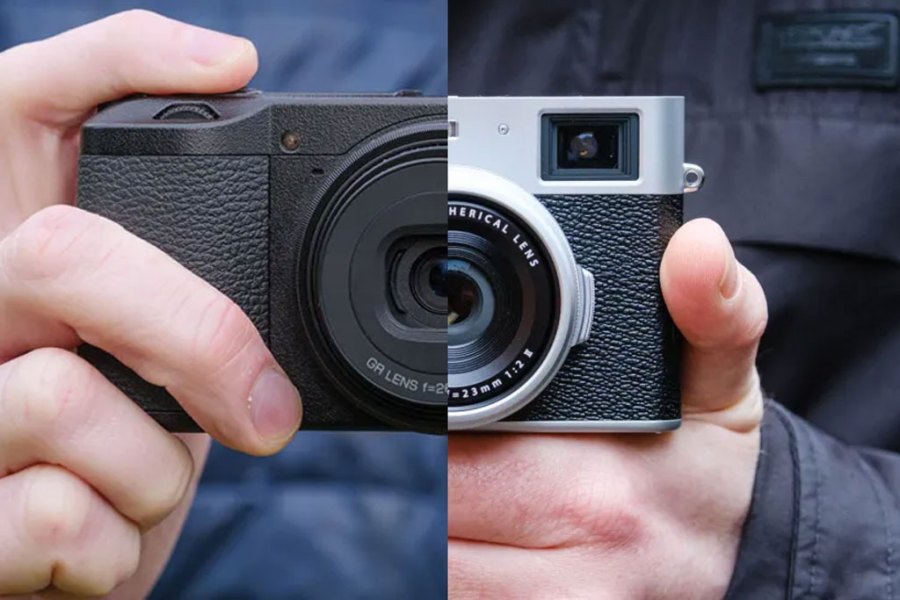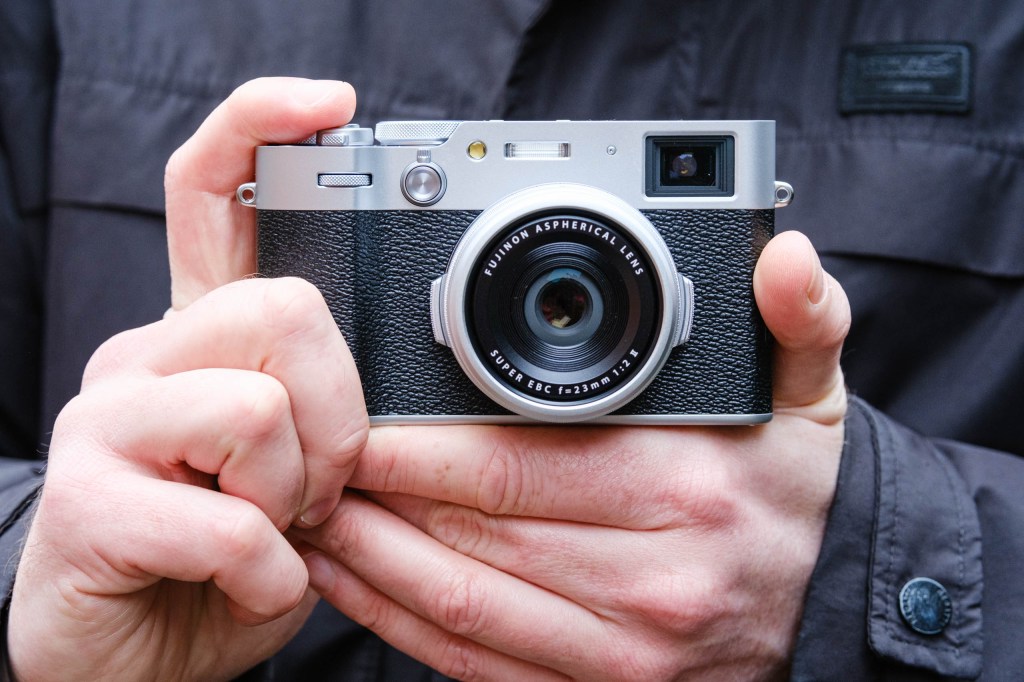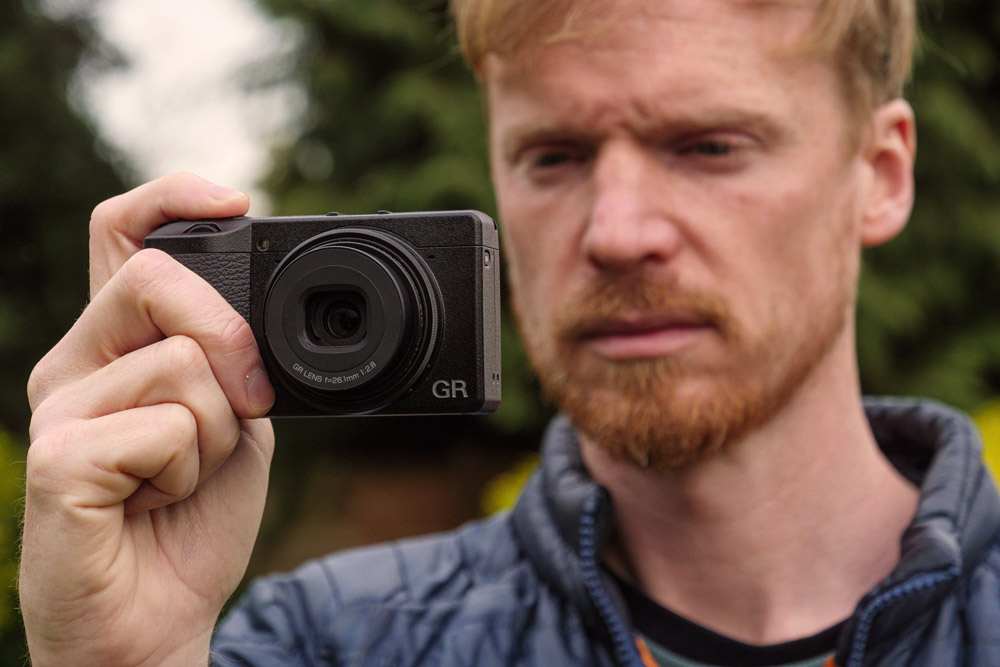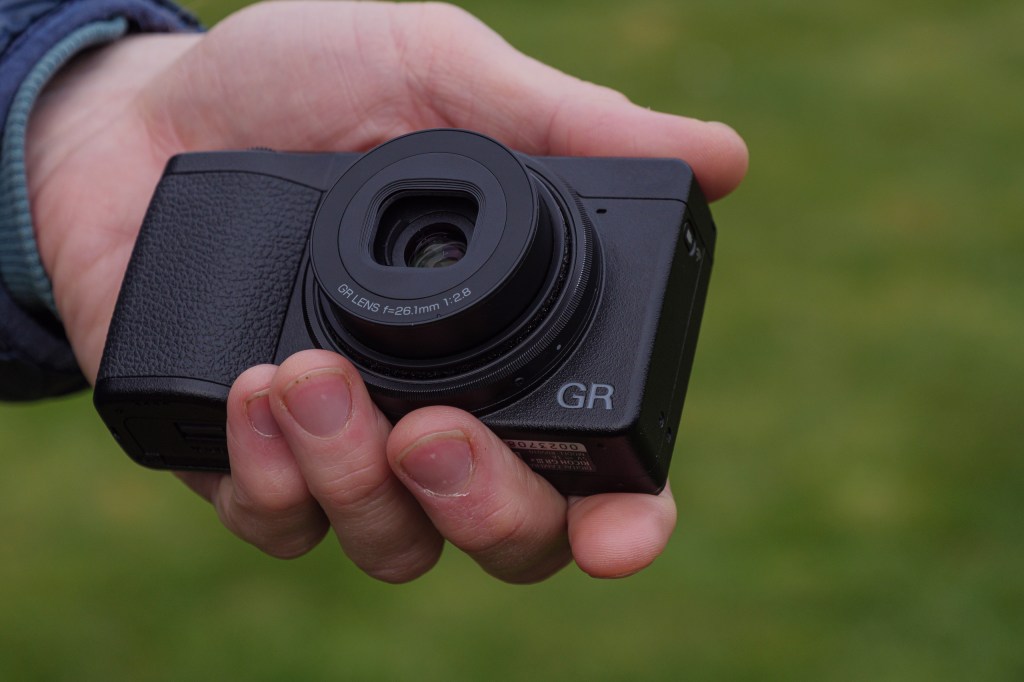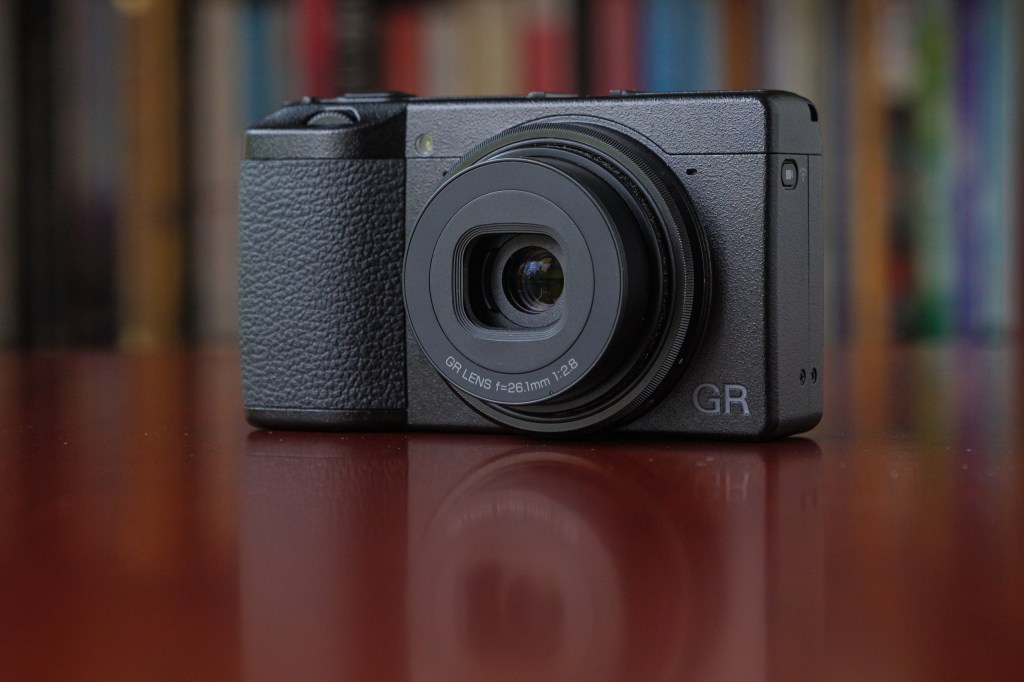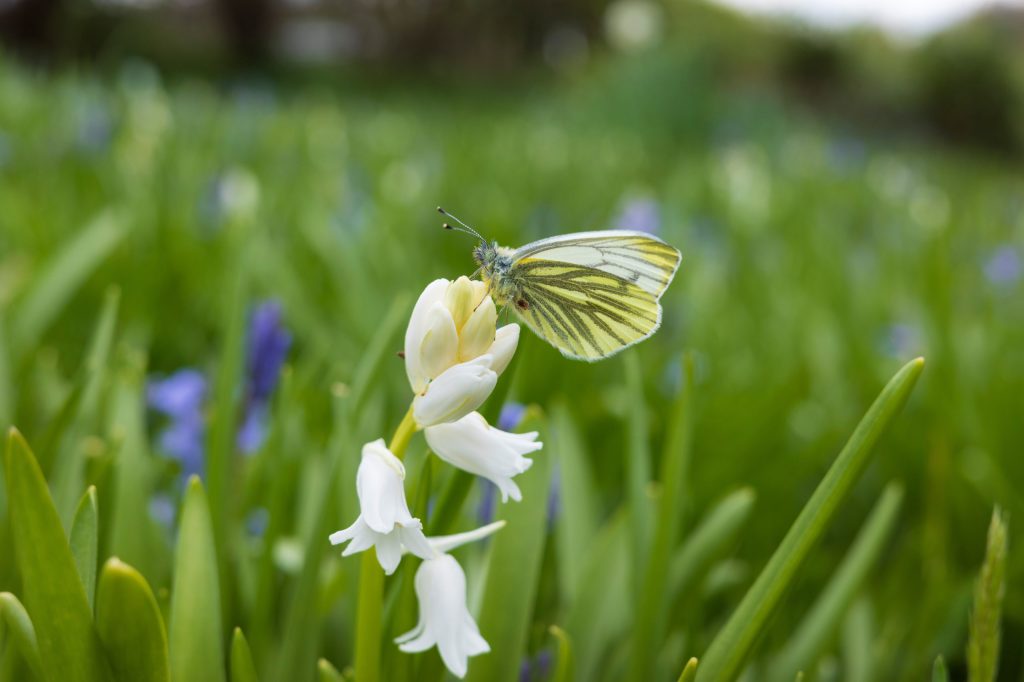There’s currently a lot of interest in compact cameras. Quite right, too. It’s great to have a small, light, pocket-friendly camera with you at all times, and though these days that basically describes your phone, there’s a catch with the latter: Phone pictures are rubbish in comparison to cameras with proper sensors, and using one is about as satisfying as playing football with a beach ball. We can argue about that later, but right now, how about a quick comparison of 2024’s leading lights of the compact world, the big-chipped Fujifilm X100VI and Ricoh GR IIIx HDF?
The Fujifilm X100VI is very popular at the moment for a lot of reasons – possibly even more so because you can’t buy one. Fujifilm didn’t make enough, which is weird because it’s not like they used up manufacturing time on what letters to etch after the ‘X100’ bit. Anyway, like its forebears, the camera is a dream for traditionalists and hipsters alike, but backs this up with 21st Century features straight out of the company’s ‘proper cameras’, like the X-T5.
Meanwhile, the Ricoh GR IIIx HDF is the latest in a long line of cameras that are regularly lauded by street and documentary photographers for their small size and excellent image quality. It’s the mostly same as the GR IIIx – which itself was identical to the x-less GR III, barring the shift from a 28mm to a 40mm equivalent lens – but now includes an integrated Highlight Diffusion Filter, something which no-one really asked for, but could be fun – as well as slightly upgraded AF and white balance options.
As a caveat, this article isn’t going to tell you which you should buy. That’s up to you, just like brushing your own teeth and feeding your cat. We’ll simply state the features of each in direct comparison to one another, and bolt some highly subjective opinions onto that. We hope that’s helpful, but if not, hey, you clicked here.
Design
Let’s start with the most important thing. How the cameras look. But seriously, you’re not buying a professional workhorse here, so subjective attitudes towards design and handling play into any decision.
As mentioned, the X100VI is about as hot as it gets in terms of vintage styling, boasting an array of clicky physical dials and metal construction that make photography a more tactile experience. It even has a built-in flash. Anyone who’s owned an X100-series camera will tell you it’s a pleasure, both to shoot with and to look at. Yes, anyone.
The design of the Ricoh GR IIIx HDF is more inspired by stealth. It’s a camera that’s not overly worried by its looks, which is a good thing, because it’s not as attractive as the X100VI in any way. It uses a digital compact layout that’s been standard for about 20 years, with a large screen, right-hand button cluster and a sparse top plate.
Plus, the X100VI has a hybrid OVF/EVF viewfinder and a tilting touchscreen. The Ricoh GR IIIx HDF’s screen is fixed. It just sits there and displays images and menus. Seriously.
To sum up, it’s only sensible to compare the two cameras through the lens of Star Trek design choices. The X100VI has all the charm of the original 1960s series, while the GR IIIx HDF is 1990s The Next Generation. Ie, sensibly streamlined, but possibly less satisfying for it. Look, we promised you ‘subjective,’ so that’s what you’re getting.
Size and weight
This is important. By their nature, compact cameras should really fit into your pocket. This means you can operate with anonymity as well as getting the hell out of Dodge without it dangling around on a strap if required.
With its retracting lens design and 109x62x35mm dimensions (slightly deeper than the x-less version), the GR IIIx HDF passes the test with flying colours, and at only 262g with battery and card, it doesn’t feel like you’ve pocketed a brick either. Unless you’re inclined to particularly voluminous clothing, it’s probably the only APS-C camera that can claim this.
While certainly not DSLR-large, the X100VI is a different story. With its fixed lens and dimensions of 128x75x55mm, it’s more awkward to stow in smaller pockets, and at 521g with battery and card you’re looking at next to double the weight. You certainly know it’s there. But then this is a camera that’s not really designed to be hidden, and unless you’re being stared out by someone from the RPS, it’s possible they may take it for a flea-market relic anyway.
Sensors
There’s a clear dividing line in resolution here, with the XT100VI using Fujifilm’s 40Mp X-Trans CMOS 5 HR sensor, while the GR IIIx HDF has a ‘regular’ bayer filtered 24Mp CMOS chip. Neither camera has an anti-aliasing filter. Plenty will argue that the X-Trans design would produce superior images in terms of colour and detail even compared to an equivalent bayer resolution.
On the flip side, the GR IIIx HDF has a significantly wider ISO range of 100-102,400 than the X100VI’s ISO 125-12,800, making it potentially more useful in low light (although the Fujifilm camera has a faster lens, as we’ll come to next). At the low end, there’s less than a stop to call, though if you’re planning slow-shutter effects it could be significant when exposures push into full seconds.
Lenses
With its 40mm equivalent f/2.8 optic, the GR IIIx HDF is a closer match for the X100VI in focal length than its stable mate, while the latter has a faster 35mm f/2 lens.
You could argue that the greater resolution of the X100VI means any difference in focal length is moot, as it’d be easy to crop in a little to achieve similar results. And you’d be right. To prove it, the camera offers digital teleconverter modes in a 50mm and 70mm flavour. The X100V also has a full stop of maximum aperture on the Ricoh camera which could be important for subject separation and for avoiding motion movement in low-light.
The GR IIIx HDF can focus down to 6cm in its macro mode, while the X100VI can shoot as close as 10cm. Useful on both counts, and not a deal breaker in either case. Both cameras also offer optical adapters if you want to move away from what their fixed lenses offer, but if you’re planning on investing in these it might be better to think about buying a small interchangeable lens mirrorless body instead.
Filters, physical and digital
Both cameras are equipped with built-in physical filters. The X100VI has a 4-stop neutral density filter that can snap into place when light needs to be lowered, for instance to use the maximum aperture or slow shutter speeds in bright conditions. While the regular GR IIIx also has an ND mode, the HDF version replaces this with its titular Highlight Diffusion Filter, giving a soft glow to bright parts of the frame, lowering contrast and looking pretty good in a vintage way.
The presence of digital filters is important, because those using these models often favour producing images straight out of the camera. Both cameras also offer a slew of modes, and while Fujifilm does a better job of marketing its own as Film Simulations, the Ricoh versions like Positive Film and Negative Film are plenty useful in their own right.
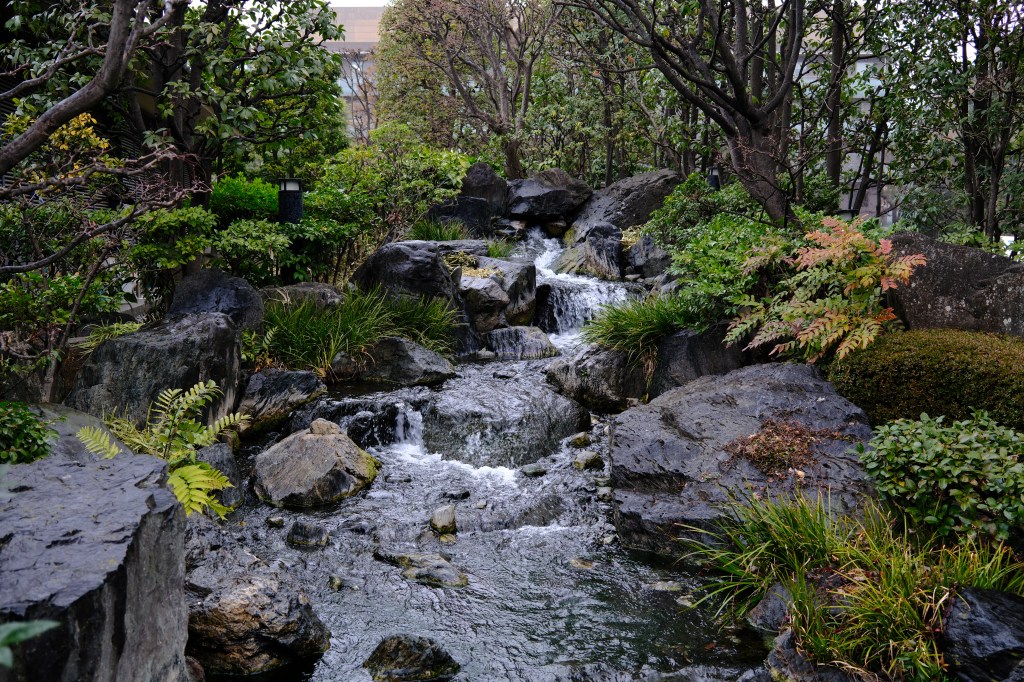
Image stabilisation
Both cameras offer sensor-shift image stabilisation, which can be helpful with the kind of handheld shooting they’re likely to be pressed into. There’s a small difference in spec here with the Ricoh GR IIIx HDF claiming a 4-stop benefit and the Fujifilm X100VI stating 6-stops of compensation. Whether this makes a marked difference in real image sharpness would depend on a laboratory-style comparison, which the real world doesn’t offer, but you could expect to handhold either camera down to the larger fractions of a second and still get sharp detail on static subjects.
Shutter speed and burst rate
Both cameras have leaf shutters, allowing high flash sync speeds – handy for the X100VI’s built-in unit if you need a burst of fill, or if adding an accessory flash to either. Mechanical shutter speeds top out at 1/4000sec on both, rising to 1/16,000sec on the GR IIIx HDF and an impressive 1/180,000sec on the X100VI, useful if you want to employ the maximum f/2 aperture within the first few seconds of an atomic explosion.

There’s clear water between the two when it comes to shooting speed. The Ricoh GR IIIx’s fastest burst speed is 4fps in its mechanical mode, while the Fujifilm X100VI can rattle away at 11fps, nearly three times its competitor. This rises to 20fps in its electronic shutter mode. If speed is important to you, this is a factor.
Focusing
Both cameras use hybrid phase- and contrast-detection systems. While both also offer a range of subject detection modes, lots of reviews place the X100VI ahead of the GR IIIx in terms of tracking performance, but that doesn’t mean the latter’s not highly effective for the kind of street and documentary situations it’s usually bought for. In any case, if you need the fastest and most accurate subject recognition AF, you’re more likely to find it on higher end interchangeable lens cameras.
The GR III cameras do have a neat Snap Focus mode, where focus can be locked to a specified distance, just like the zone-focusing of old, and that’s highly appealing to street shooters.

Batteries
Yes, both have batteries. Thanks for checking.
But okay, let’s get into the details. The batteries used in these smaller bodies are, by necessity, small as well. The X100VI has an 8.7Wh NP-W126S unit, claiming 310 shots when using the EVF and 450 without. The GR IIIx HDF has an even smaller cell, the 4.9Wh DB-110 battery, and it’s rated at only 200 shots per charge.
Pound for pound, the X100VI wins again, but at the cost of increased size and weight. However, it’s important to remember that these figures are benchmarks created by CIPA and don’t really reflect the amount of shots you’ll get during a range of shooting conditions. They can easily click through double the stated amount and beyond. Plus, both cameras can be topped up via a USB C connection in the field. And spare batteries exist, too.

Conclusion and price
As of late May 2024, neither camera is in stock anywhere, so which to buy is a moot point. Let’s face it, pre-ordering doesn’t deliver the same dopamine hit as swapping actual cash for a box with a camera in it.
In truth neither camera feels badly priced. Both are at the luxury end of things and both deliver some great features and superb image quality for the money, along with very similar focal lengths. These are well loved cameras for a reason.
You’re looking at paying around 50% more for the X100VI, but for that you get more. Of course, in this case ‘more’ also means ‘bigger,’ and portability is one area that the GR IIIx really excels in. What could that £500 saving also get you? A nice trip to Venice to do some street photography? A selection of accessories? It’s also £500 you could put towards an X100VI. Oh, the mental anguish!
Look, if you’re still reading at this point, here’s the thing: both are extremely capable cameras and the one you choose depends entirely on how you like to shoot. In some ways it would be better to take a personality test than read a comparison article, wouldn’t it?
Related content:
- Best camera for street photography
- Fujifilm X100 Series: The complete guide
- Fujifilm X100V and X100VI Alternatives? Best retro cameras
- Fujifilm X100V vs Fujifilm X100VI comparison – key differences explored
Follow AP on Facebook, Twitter, Instagram, YouTube and TikTok.

